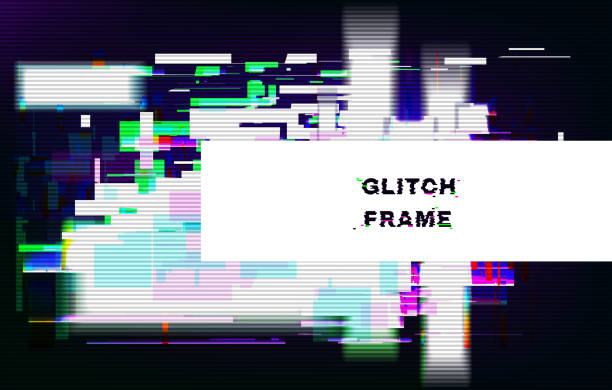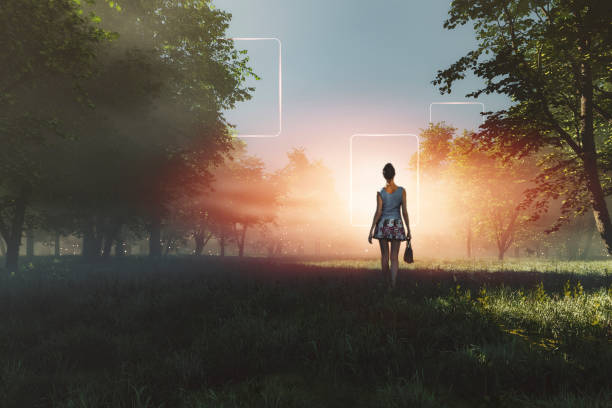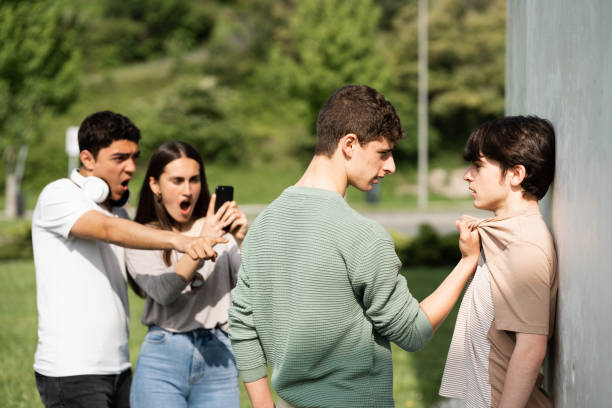How To Describe Glitching In a Story (Types & Examples)
How To Describe Glitching In a Story
How To Describe Glitching In a Story: In the intricate dance between reality and imagination, glitching emerges as a tantalizing phenomenon, offering storytellers a kaleidoscopic canvas upon which to paint tales that blur the boundaries of perception.
Describing glitching in a story is not merely a technical endeavor but an artistic exploration of the surreal and the uncanny.
It beckons writers to delve into the depths of the human psyche, where fragmented fragments of existence dance in chaotic harmony.
This guide embarks on a journey through the intricacies of capturing glitching within the written word, delving into the nuances of sensory details, metaphorical approaches, and emotional resonance.
Join us as we unravel the mysteries of glitching and discover how it serves as both a catalyst for narrative innovation and a mirror reflecting the enigmatic landscapes of the human experience.
How To Describe Glitching In a Story
Here’s a step-by-step guide on How To Describe Glitching In a Story:
Set the Scene
Describe the environment where the glitching occurs. Is it a digital world, a futuristic cityscape, or a contemporary setting with advanced technology?
Introduce the Glitch
Start by subtly hinting at something unusual happening. Maybe characters notice flickering lights, distorted sounds, or erratic behavior in machinery or digital interfaces.
Describe the Symptoms
Detail how the glitch manifests. Are there visual distortions like pixelation or fragmentation? Does time seem to skip, or do events repeat themselves inexplicably?
Physical Effects
Explore how glitching affects the characters involved. Do they experience disorientation, dizziness, or even physical pain? Describe any sensations such as tingling, buzzing, or a sense of unreality.
Emotional Response
Show how characters react to the glitching. Are they frightened, confused, or intrigued? Do they try to rationalize the phenomenon or panic in the face of the unknown?
Impact on the Plot
Consider how the glitching advances the story. Does it reveal hidden truths, create obstacles for the characters, or serve as a catalyst for further events?
Technical Jargon (Optional)
If appropriate for your story’s setting, sprinkle in technical terms related to computer science, cybernetics, or neuroscience to enhance the authenticity of the glitching phenomenon.
Resolution (Optional)
Decide whether the glitching resolves on its own, through the characters’ actions, or if it remains a lingering mystery. Offer closure or leave room for further exploration, depending on the narrative’s needs.
Remember to weave these steps seamlessly into your storytelling to create a vivid and engaging portrayal of glitching in your story.

Understanding Glitching
Understanding To Describe Glitching In a Story is akin to peering into the kaleidoscope of reality, where fractured fragments of existence dance in chaotic harmony.
It’s not merely a malfunction, but a symphony of discordant notes played by the universe itself. Glitches emerge as whispers of the digital realm infiltrating our analog lives, distorting perceptions and blurring the boundaries between what is real and what is imagined.
They are the glitches in the matrix, the ripples in the fabric of time, the cracks in the façade of our understanding.
To understand glitching is to embark on a journey through the corridors of uncertainty, where every flicker and stutter unveils a glimpse of the infinite possibilities lurking just beyond the veil of normalcy.
Types of glitches: visual, auditory, temporal, spatial
Imagine stepping into a surreal dreamscape where the laws of reality are bent and twisted at every turn. Visual glitches morph the world around you into a surreal canvas, where colors bleed and shapes contort in an otherworldly dance.
Auditory glitches echo through the air like haunting melodies, distorting soundwaves and playing tricks on your senses.
Temporal glitches warp the fabric of time itself, causing moments to stretch and compress in unpredictable ways, while spatial glitches twist the very dimensions of space, folding reality in on itself like a cosmic origami.
These glitches aren’t mere errors; they’re portals to a realm where the impossible becomes possible, and where the boundaries of perception are shattered with each glitched heartbeat.
Crafting Vivid Descriptions
Crafting vivid descriptions is akin to wielding a paintbrush dipped in the colors of imagination, each stroke weaving a tapestry of sensory delight.
It’s about more than just words on a page; it’s an alchemical process of transforming mere text into a symphony for the senses. Visual descriptions breathe life into scenes, painting landscapes with vibrant hues and intricate details that transport readers to distant worlds.
Auditory descriptions fill the air with the cacophony of whispered secrets and thundering echoes, orchestrating a symphony of sound that resonates deep within the soul.
Tactile descriptions awaken the senses, inviting readers to feel the cool caress of a gentle breeze or the warmth of a lover’s touch.
Crafting vivid descriptions is about creating a world so vivid and immersive that readers can’t help but lose themselves in its splendor, where every word is a brushstroke in the masterpiece of storytelling.
Utilizing sensory details
Utilizing sensory details is the art of infusing a narrative with the rich tapestry of human experience, drawing readers into a world alive with sights, sounds, smells, tastes, and textures.
It’s about more than just painting a picture; it’s about evoking a visceral response that resonates deep within the soul. Visual details transport readers to vivid landscapes, where they can see the play of light on dew-kissed petals or the ominous shadows lurking in a moonlit alley.
Auditory details fill the air with the symphony of life, from the melodic chirping of birds at dawn to the haunting wail of a distant siren in the dead of night.
Olfactory details awaken the senses, conjuring the heady aroma of freshly brewed coffee or the acrid tang of smoke drifting on the breeze.
Tactile details invite readers to feel the cool touch of raindrops on their skin or the rough texture of weathered stone beneath their fingertips. By harnessing the power of sensory details, writers can immerse readers in a world so vivid and lifelike that they can almost taste the magic lingering in the air.
Metaphorical approaches
Metaphorical approaches in storytelling serve as the bridge between the tangible and the abstract, allowing writers to imbue their narratives with layers of meaning and depth.
Like a master painter blending colors on a canvas, writers can weave intricate tapestries of metaphor, using familiar symbols and allegories to convey complex emotions and ideas.
By likening glitches to natural phenomena, such as storms or earthquakes, writers can evoke a sense of primal chaos and upheaval, mirroring the tumultuous inner landscapes of their characters.
Similarly, analogies to human experiences, like memory loss or déjà vu, can lend a sense of familiarity to the inexplicable, offering readers a foothold in the ethereal realm of glitching.
Metaphorical approaches not only enrich the storytelling experience but also invite readers to explore the interconnectedness of the human psyche and the universe at large, where every glitch becomes a doorway to enlightenment.
Incorporating emotional responses
Incorporating emotional responses into storytelling is akin to infusing the narrative with the beating heart of humanity itself.
It’s about capturing the raw essence of human experience—the joys, sorrows, fears, and triumphs—and translating them into words that resonate with readers on a visceral level.
Glitching, with its inherent sense of disorientation and uncertainty, provides a rich canvas for exploring a myriad of emotions.
From the primal fear that grips a character as they confront the unknown to the profound sense of wonder that accompanies the discovery of hidden truths, emotional responses add depth and authenticity to the narrative tapestry.
By immersing readers in the emotional journey of the characters, writers can forge a powerful connection that transcends the confines of the page, inviting them to experience the highs and lows of the glitched reality firsthand.

Integrating Glitches into Narrative
Integrating glitches into narrative is akin to weaving threads of uncertainty into the fabric of storytelling, creating a tapestry of intrigue that captivates the imagination.
Like cosmic anomalies scattered across the universe, glitches serve as portals to uncharted realms of possibility, where the laws of reality bend and warp at every turn.
Whether they manifest as subtle distortions in perception or cataclysmic ruptures in the fabric of time and space, glitches inject a sense of unpredictability and wonder into the narrative landscape.
They become catalysts for change, propelling characters into uncharted territory and sparking revelations that reshape the very foundations of their existence.
By seamlessly integrating glitches into the narrative, writers can craft a world that is as enigmatic and ever-shifting as the mysteries that lie within the human psyche, inviting readers to embark on a journey where every glitch is a doorway to enlightenment.
Plot-driven glitches
Plot-driven glitches serve as the elusive breadcrumbs scattered throughout the narrative landscape, guiding characters and readers alike on a journey of discovery and revelation.
These glitches are not mere anomalies but rather integral components of the story’s architecture, carefully orchestrated to propel the plot forward and unravel its deepest mysteries.
Whether they manifest as cryptic symbols hidden within a digital labyrinth or as inexplicable phenomena that defy the laws of nature, plot-driven glitches hold the key to unlocking the secrets that lie at the heart of the tale.
They serve as catalysts for action, driving characters to confront their fears, unravel conspiracies, and ultimately, to uncover the truth that lies obscured by the veil of glitched reality.
Through the intricate interplay of cause and effect, plot-driven glitches imbue the narrative with a sense of urgency and momentum, ensuring that every twist and turn keeps readers on the edge of their seats, eager to uncover the next clue in the enigmatic puzzle that is the glitched world.
Character-driven glitches
Character-driven glitches are the fractures in the façade of identity, the cracks through which the true essence of a character emerges. These glitches are not just external anomalies but internal upheavals, mirroring the inner conflicts and struggles of the protagonists.
They manifest as moments of profound revelation, where the masks they wear slip away to reveal the raw vulnerability beneath.
Whether it’s a sudden flashback triggered by a glitched memory or a recurring anomaly that haunts their every waking moment, character-driven glitches force protagonists to confront their deepest fears, desires, and regrets.
They serve as catalysts for growth and transformation, pushing characters to reevaluate their beliefs, forge new alliances, and ultimately, to embark on a journey of self-discovery.
Through the lens of character-driven glitches, writers can delve into the complex depths of the human psyche, exploring themes of identity, agency, and the fragile nature of reality itself.
World-building through glitches
World-building through glitches is akin to sculpting reality from the fragments of possibility, where every glitch serves as a window into a parallel universe waiting to be explored.
These anomalies are not just random disruptions but integral elements of the world’s fabric, shaping its history, culture, and inhabitants in profound ways.
From glitched landscapes where gravity behaves erratically to cities overrun by sentient digital constructs, the possibilities are as boundless as the imagination itself.
Glitches become the foundation upon which entire civilizations rise and fall, each anomaly a testament to the infinite diversity of worlds waiting to be discovered.
Through the lens of world-building, writers can craft immersive narratives that defy the conventions of reality, inviting readers to lose themselves in the labyrinthine corridors of glitched existence where every twist and turn reveals a new wonder waiting to be uncovered.
Advanced Techniques
Advanced techniques in storytelling are akin to wielding a magician’s wand, weaving spells of wonder and enchantment that captivate the mind and ignite the imagination.
These techniques transcend the boundaries of traditional narrative, inviting readers on a journey through the realms of the extraordinary and the surreal.
From non-linear storytelling that defies the constraints of time to unreliable narration that blurs the lines between truth and illusion, each technique is a brushstroke in the masterpiece of storytelling, adding depth and complexity to the narrative tapestry.
Through experimentation with structure, symbolism, and collaborative storytelling, writers can push the boundaries of creativity to new heights, transforming glitches into portals to uncharted realms of possibility.
Advanced techniques in storytelling are not just tools for crafting compelling narratives but gateways to worlds where every word is a doorway to adventure and every glitch is a whisper of magic waiting to be unlocked.
Experimentation with narrative structure
Experimentation with narrative structure is akin to exploring uncharted territories, where every twist and turn leads to new revelations and unexpected discoveries.
It’s about breaking free from the constraints of linear storytelling and venturing into the realm of the unconventional, where time bends and reality shifts with each turn of the page.
From fragmented narratives that piece together like a jigsaw puzzle to parallel storylines that intersect and diverge like threads in a tapestry, the possibilities are as boundless as the imagination itself.
By challenging traditional norms and embracing innovative approaches, writers can craft narratives that resonate with depth and complexity, inviting readers to embark on a journey of exploration and discovery where every narrative choice is a step into the unknown.
Experimentation with narrative structure is not just about pushing the boundaries of storytelling but about forging new paths that lead to realms of storytelling yet to be explored.

Symbolism and thematic exploration
Symbolism and thematic exploration in storytelling are like hidden treasures waiting to be unearthed, each layer of meaning adding depth and richness to the narrative tapestry.
Symbols are the language of the subconscious, speaking volumes in whispers and echoes that resonate long after the story has ended.
From the delicate petals of a wilting flower symbolizing the passage of time to the towering walls of a labyrinth representing the complexities of the human psyche, symbolism infuses every aspect of the narrative with layers of significance and resonance.
Through thematic exploration, writers delve into the universal truths and timeless questions that define the human experience, from the nature of love and loss to the search for meaning and purpose.
By weaving symbols and themes into the fabric of their storytelling, writers create narratives that transcend the bounds of time and space, inviting readers to embark on a journey of introspection and discovery where every symbol is a clue and every theme a guiding light.
Collaborative storytelling
Collaborative storytelling is a dynamic dance of creativity, where writers join hands to craft narratives that transcend the boundaries of individual imagination.
Like a symphony conducted by many hands, collaborative storytelling brings together diverse perspectives and voices, weaving them into a harmonious tapestry of shared vision and collective genius.
From collaborative writing projects where authors collaborate in real-time to interactive storytelling experiences that invite readers to shape the narrative through their choices, the possibilities are as limitless as the imagination itself.
Through collaboration, writers not only amplify the creative potential of their storytelling but also forge bonds of camaraderie and connection that transcend the confines of the page.
Collaborative storytelling is not just about sharing the workload; it’s about harnessing the power of collective imagination to create narratives that are greater than the sum of their parts, inviting readers to become co-creators in the magical world of storytelling.
Case Studies and Examples
Case studies and examples in storytelling are like windows into the creative minds of master craftsmen, offering glimpses of their techniques and insights that illuminate the path for aspiring writers.
Each case study is a treasure trove of narrative mastery, dissecting the intricacies of plot, character, and world-building with surgical precision.
From timeless classics that have stood the test of time to contemporary masterpieces that push the boundaries of storytelling, the breadth and depth of examples offer endless inspiration and guidance.
Whether it’s analyzing the intricate web of intrigue in a mystery novel or deconstructing the nuanced character development in a literary epic, case studies provide invaluable lessons that resonate long after the final page is turned.
Through the lens of case studies and examples, writers can uncover the secrets of storytelling alchemy, transforming words into magic and ideas into unforgettable tales that linger in the hearts and minds of readers for generations to come.
Challenges and Pitfalls
Navigating the labyrinth of storytelling is not without its pitfalls and challenges, where every twist and turn presents new obstacles to overcome.
From the siren call of clichés that lure unsuspecting writers into the depths of mediocrity to the treacherous waters of narrative inconsistency that threaten to capsize even the most seaworthy of tales, the journey is fraught with peril at every step.
Balancing clarity with ambiguity, maintaining narrative momentum without sacrificing depth, and avoiding the siren song of formulaic storytelling are just a few of the challenges that writers must confront on their quest for literary mastery.
Yet, it is through facing these challenges head-on that writers hone their craft and emerge stronger, their stories imbued with a richness and complexity that transcends the ordinary.
In the crucible of adversity, writers forge narratives that shine like diamonds, their brilliance undimmed by the trials and tribulations of the creative process.
Frequently Asked Questions (FAQ) about How To Describe Glitching In a Story
What exactly is glitching in storytelling?
Glitching in storytelling refers to the portrayal of technical malfunctions or anomalies within the narrative, often manifesting as visual, auditory, temporal, or spatial distortions. These glitches can serve as catalysts for plot development, character exploration, and thematic depth.
How can I effectively describe glitching in my story?
Effective description of glitching involves utilizing vivid sensory details to immerse readers in the surreal experience. By incorporating visual, auditory, tactile, and emotional elements, writers can evoke the disorienting nature of glitches and enhance the atmospheric richness of the narrative.
Are there specific techniques for incorporating glitching into my storytelling?
Yes, there are various techniques that writers can employ, such as metaphorical approaches where glitches are likened to natural phenomena or human experiences, and plot-driven or character-driven approaches where glitches serve as pivotal elements in the story’s development.
How do I ensure that my descriptions of glitching are not clichéd or overused?
Avoiding clichés and overused tropes involves approaching glitching with creativity and originality. Experiment with narrative structure, symbolism, and collaborative storytelling to offer fresh perspectives on glitching and its implications within your story.
Can glitching be used in different genres of storytelling?
Absolutely! Glitching can add depth and intrigue to a wide range of genres, including science fiction, fantasy, mystery, horror, and even literary fiction. Its versatility allows writers to explore diverse themes and narrative styles across various genres.
Conclusion
In conclusion of How To Describe Glitching In a Story, mastering the art of describing glitching in a story is a journey of creativity, innovation, and immersion.
By harnessing the power of vivid sensory details, metaphorical approaches, and emotional resonance, writers can transform glitches from technical anomalies into narrative wonders that captivate readers’ imaginations.
Whether used as plot devices, character explorations, or thematic elements, glitching offers a rich tapestry for storytelling that transcends the boundaries of reality.
As writers continue to experiment with narrative structure, symbolism, and collaborative storytelling, the possibilities for depicting glitching in stories remain limitless, inviting readers to embark on journeys through glitched realities where every twist and turn is a doorway to new realms of wonder and discovery.






